Best Laravel Controller Tools to Buy in October 2025
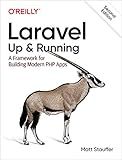
Laravel: Up & Running: A Framework for Building Modern PHP Apps


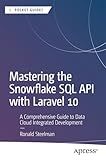
Mastering the Snowflake SQL API with Laravel 10: A Comprehensive Guide to Data Cloud Integrated Development (Apress Pocket Guides)


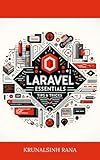
Laravel Essentials: Tips & Tricks for Developers: Master Laravel with Practical Tips for Every Developer


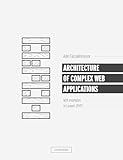
Architecture of complex web applications. Second Edition.: With examples in Laravel(PHP)



Laravel 7.X : LEARN BASIC LESSONS & BUILD A CRUD APP (PHP Framework)



Consuming APIs in Laravel: Build Robust and Powerful API Integrations For Your Laravel Projects With Ease



Overview Of Laravel PHP Framework: For Other Web Framework Users



Node.js in Practice



The Laravel Survival Guide: Written & Updated for Laravel 5.3


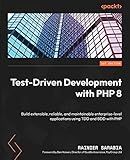
Test-Driven Development with PHP 8: Build extensible, reliable, and maintainable enterprise-level applications using TDD and BDD with PHP


To create a new controller in Laravel, you can use the php artisan make:controller command in the command line. Simply open your terminal and navigate to your Laravel project directory.
Once you are in the project directory, run the following command:
php artisan make:controller YourControllerName
Replace YourControllerName with the name you want to give to your new controller. This command will create a new controller file within the app/Http/Controllers directory in your Laravel project.
You can then define your controller methods within the newly created file. Laravel controllers typically extend the base Controller class provided by Laravel, which can be found at app/Http/Controllers/Controller.php.
After creating your controller, you can use it to define the logic for handling HTTP requests and communicating with your models and views. Make sure to properly route requests to your new controller in your routes file (web.php or api.php) so that it can handle incoming requests.
How to create RESTful controllers in Laravel?
To create RESTful controllers in Laravel, follow these steps:
- Create a new controller by running the following command in your terminal:
php artisan make:controller YourControllerName
- In the newly created controller file (located in the app/Http/Controllers directory), define the CRUD methods for your resource. Typically, you would include methods such as index (for displaying all resources), show (for displaying a specific resource), store (for creating a new resource), update (for updating a resource), and destroy (for deleting a resource).
namespace App\Http\Controllers;
use App\Models\YourModelName; use Illuminate\Http\Request;
class YourControllerName extends Controller { public function index() { // Logic to fetch and display all resources }
public function show($id)
{
// Logic to fetch and display a specific resource
}
public function store(Request $request)
{
// Logic to create a new resource
}
public function update(Request $request, $id)
{
// Logic to update a specific resource
}
public function destroy($id)
{
// Logic to delete a specific resource
}
}
- Add route definitions in the routes/web.php file to map the HTTP requests to the controller methods. You can use the Route facade to define these routes. For example:
Route::get('/your-resource', 'YourControllerName@index'); Route::get('/your-resource/{id}', 'YourControllerName@show'); Route::post('/your-resource', 'YourControllerName@store'); Route::put('/your-resource/{id}', 'YourControllerName@update'); Route::delete('/your-resource/{id}', 'YourControllerName@destroy');
- You can now make HTTP requests to the defined routes to interact with your RESTful API. Laravel's resource routing and controller resource method can also be used to simplify the setup of RESTful controllers.
By following these steps, you can create and implement RESTful controllers in Laravel to handle CRUD operations for your resources.
What is the recommended way to test controllers in Laravel?
The recommended way to test controllers in Laravel is to use the built-in testing feature called PHPUnit. PHPUnit is a testing framework that is included with Laravel and is used to write and run tests for your application.
To test controllers in Laravel using PHPUnit, you can create test classes that extend the Laravel TestCase class. Inside these test classes, you can write test methods that make HTTP requests to your controllers and assert the expected output.
Here is an example of how you can test a controller in Laravel using PHPUnit:
use Illuminate\Foundation\Testing\RefreshDatabase; use Tests\TestCase;
class UserControllerTest extends TestCase { use RefreshDatabase;
public function test\_can\_list\_users()
{
$response = $this->get('/users');
$response->assertStatus(200);
$response->assertJson(\[
'success' => true,
'data' => \[\]
\]);
}
public function test\_can\_create\_user()
{
$response = $this->post('/users', \[
'name' => 'John Doe',
'email' => 'john.doe@example.com',
\]);
$response->assertStatus(201);
$response->assertJson(\[
'success' => true,
'data' => \[
'name' => 'John Doe',
'email' => 'john.doe@example.com',
\]
\]);
}
}
In the above example, we have created a test class called UserControllerTest that extends the Laravel TestCase class. Inside this class, we have defined two test methods that make HTTP requests to the /users route, one for listing users and one for creating a new user. Inside each test method, we use Laravel's built-in assertion methods to assert the expected status code and response JSON.
By using PHPUnit to test controllers in Laravel, you can ensure that your application behaves as expected and catch any errors that may arise during development.
What is the relationship between controllers and views in Laravel?
In Laravel, controllers act as the middlemen between the routes and views. Controllers handle the logic of a request and interact with the models to retrieve and manipulate data. Once the data is processed, the controller passes it to the view to be displayed to the user.
The relationship between controllers and views in Laravel follows the MVC (Model-View-Controller) architectural pattern. Controllers manage the flow of data and handle user input, while views are responsible for displaying the data to the user in a visually appealing format. Controllers and views work together to create a seamless user experience in Laravel applications.
How to generate controller-specific views using the make command in Laravel?
To generate controller-specific views using the make command in Laravel, you can follow these steps:
- Open your terminal and navigate to your Laravel project directory.
- Run the following command to generate a new controller:
php artisan make:controller ExampleController
- After creating the controller, navigate to the newly created controller file located in the "app/Http/Controllers" directory.
- Inside the controller file, define the actions (methods) you want to include in your controller.
- To generate views specific to the controller actions, you can run the following command in your terminal:
php artisan make:view example.index
Replace "example" with the name of your controller and "index" with the name of the action/method you want to generate a view for.
- After running the command, you will find the newly generated view file in the "resources/views" directory.
By following these steps, you can generate controller-specific views using the make command in Laravel.
